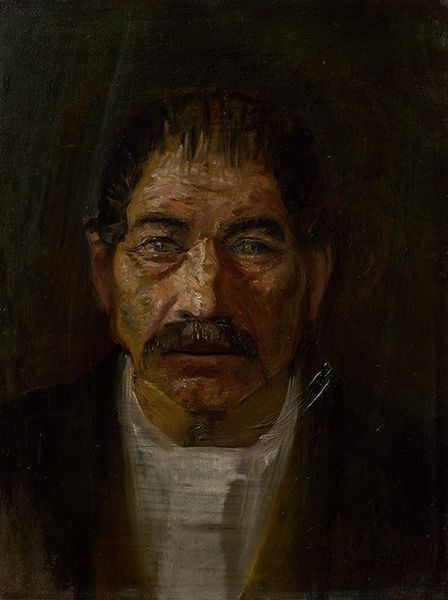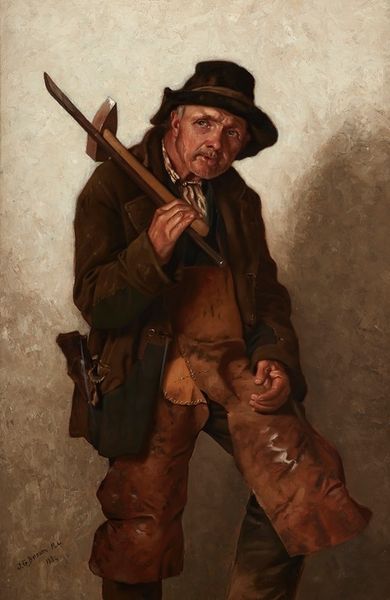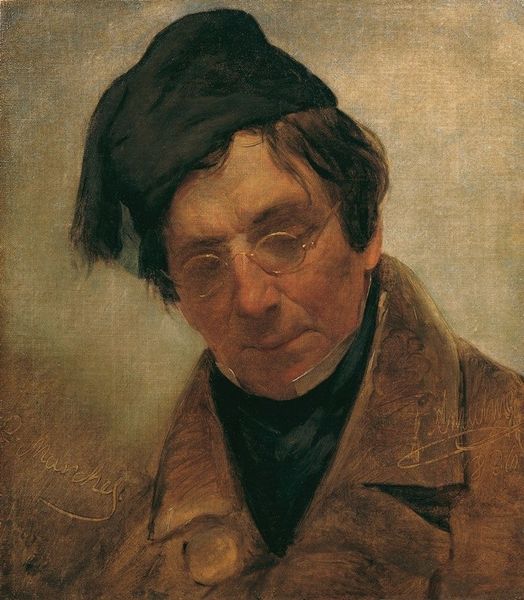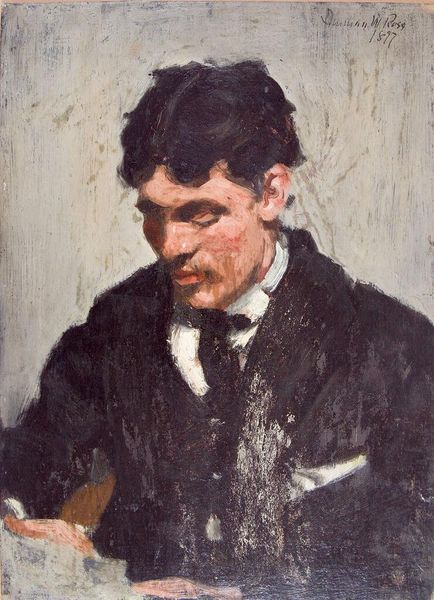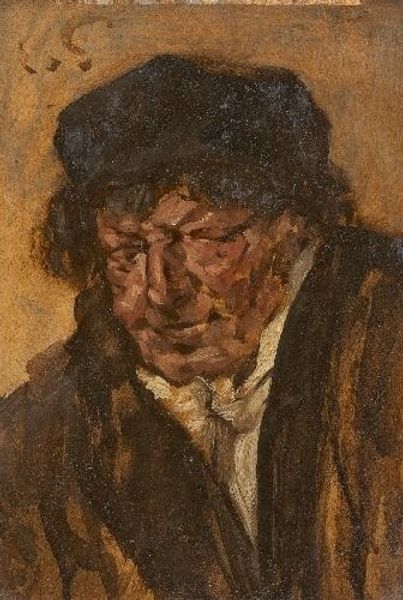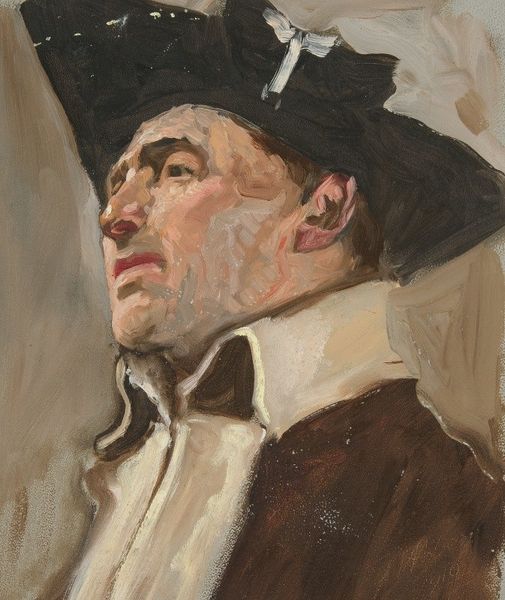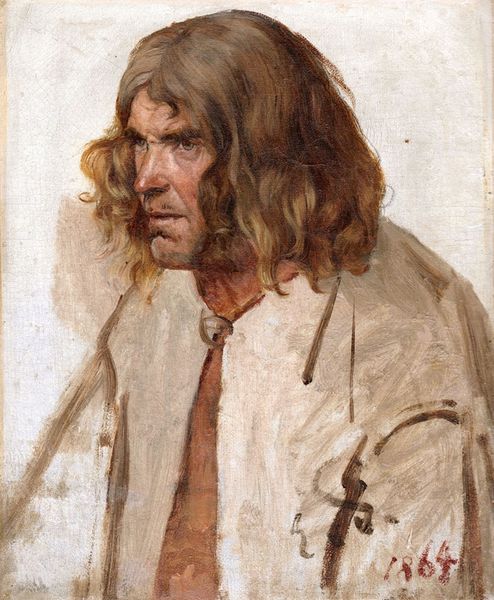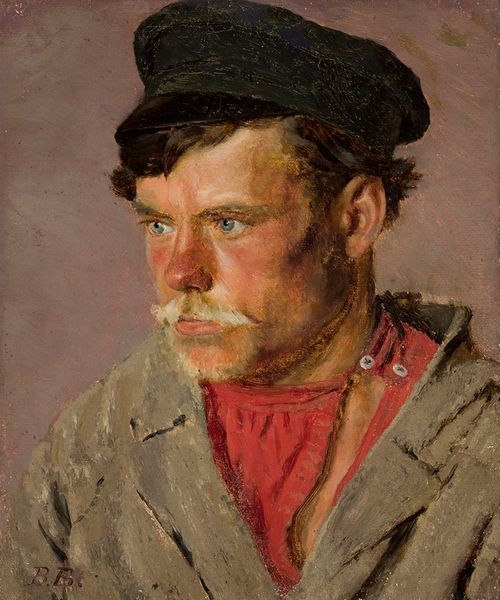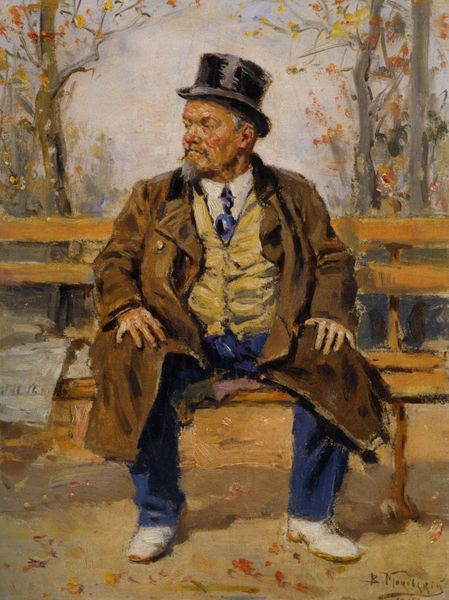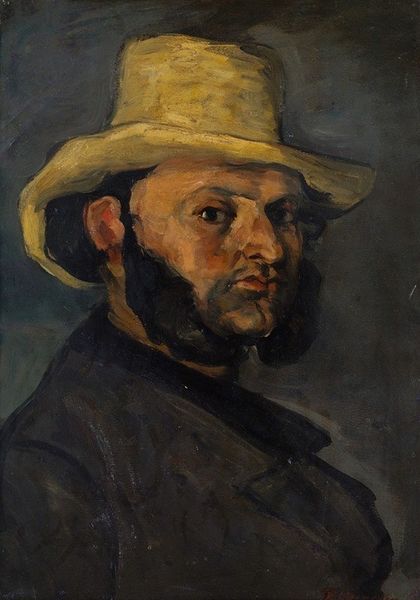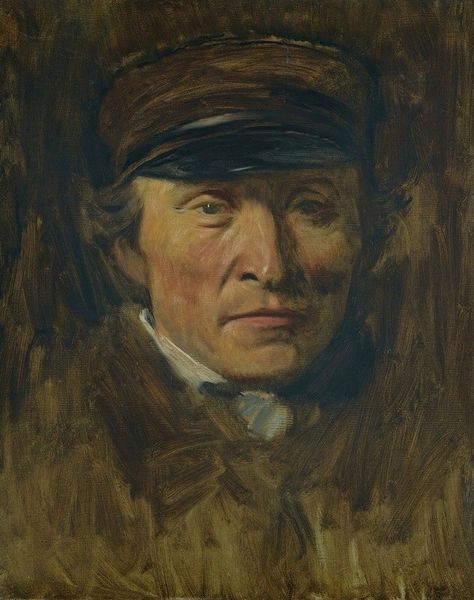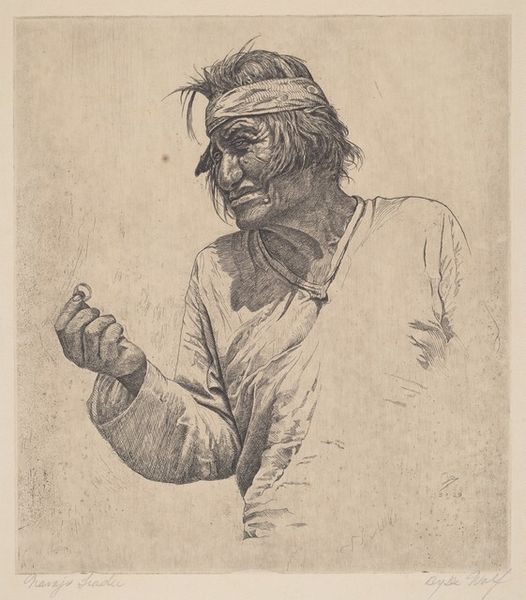
Dimensions: 53 x 41 cm
Copyright: Public domain
Editor: Here we have Albert Edelfelt's "Karelian Without an Eye," an oil painting from 1879. It's a striking portrait. The man's face is incredibly weathered, and the missing eye adds a raw vulnerability. What's your take on this piece? Curator: From a materialist perspective, consider the very act of its production. Edelfelt used oil paint, a readily available but relatively costly material at the time, pointing to the professionalization of art and the commodification of images. The brushstrokes themselves are quite visible, raw and unblended. What does that choice convey about the representation of labor, or perhaps, of masculinity? Editor: It makes him seem rough, certainly not idealized in any way. Do you think that the 'realism' sought to portray everyday people rather than an idealized upper class? Curator: Precisely. And realism has roots in social consciousness. How does representing a working-class Karelian man – a specific regional identity, further marked by disability – challenge the art market of the late 19th century? It forces a confrontation with the realities of labor and societal inequalities that were conveniently ignored. Think about what goes into acquiring the raw materials. Editor: The canvas, the pigments... there's labor involved at every step, beyond just Edelfelt's artistic work. It's like a record of physical work ingrained within the portrait. Curator: Exactly. Every layer, every visible brushstroke tells a story of both the subject and the artist's physical interaction with their materials. This intertwining is crucial for understanding how social relations are manifested in material forms. The availability and cost of oil paints shape his art making as much as his style. Editor: I hadn't thought about it that way before, viewing it as a cultural record with socio-economic underpinnings, thank you for sharing! Curator: It shows how artwork is enmeshed within complex and shifting cultural currents; focusing on its physical attributes can provide rich socio-cultural commentary!
Comments
No comments
Be the first to comment and join the conversation on the ultimate creative platform.
